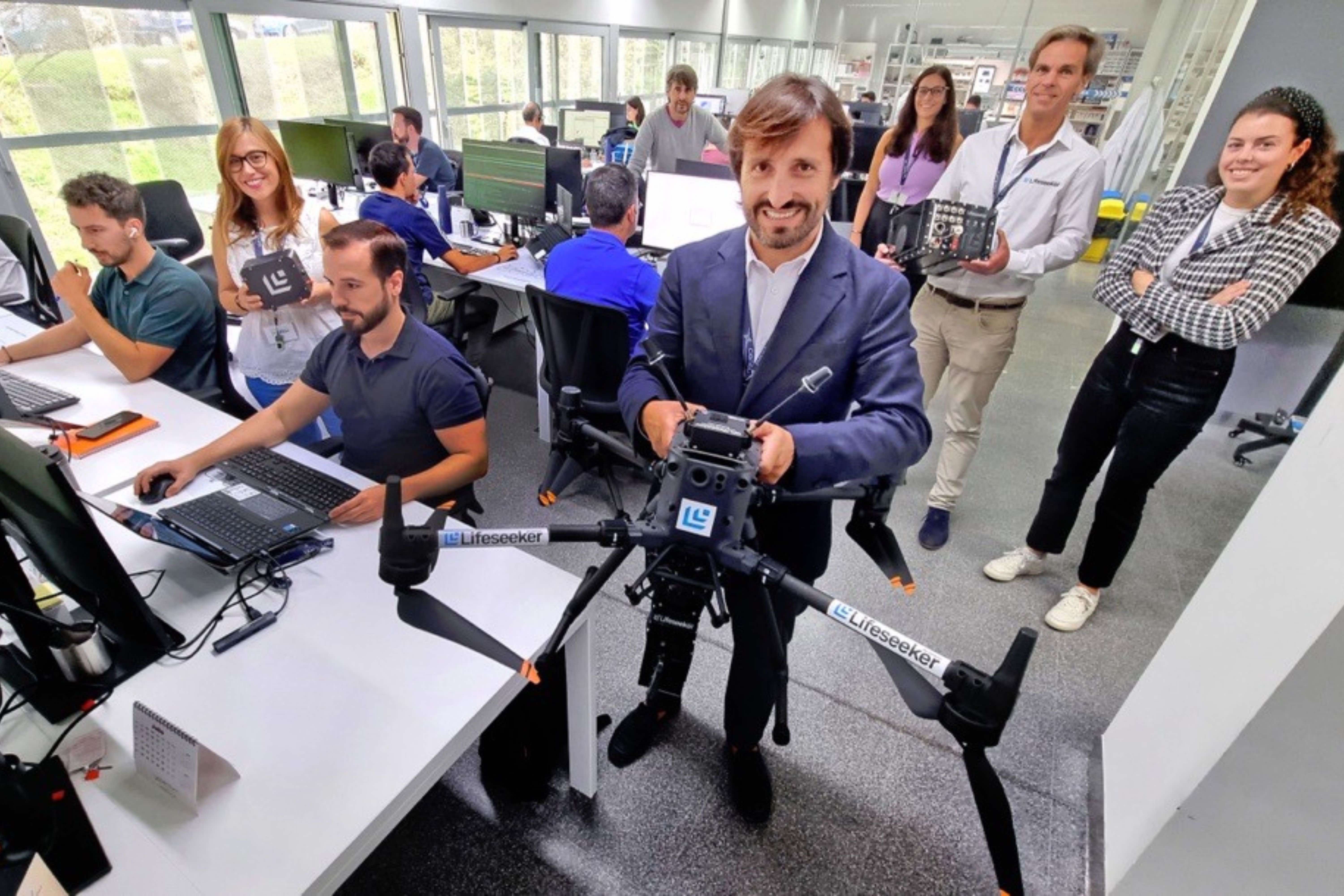
Latest information

Interview with Héctor Estévez, CEO of Centum Research and Technology
Based in Vigo, Centum Research and Technology is one of the companies with the greatest impact on the aerospace sector in Galicia. With presence in several international markets, in the last 5 years they have experienced a remarkable growth, both in staff and turnover, reflecting the success of their products and services. Among them is Lifeseeker, an innovative aeronautical system for locating missing persons.
What is Centum Research and Technology's mission in the market and in which areas of expertise do you specialize?
Centum Research and Technology's mission is to design, develop and commercialize mission-critical aeronautical systems in the emergency, security, defense and aerospace fields. Our vision is to develop highly technological systems for manned and unmanned aerial platforms that bring great value to the world.
The areas of expertise in which we specialize include digital signal processing, software defined radio and radio communications. Centum specializes in mobile communications. We use the latest advances in communication technologies to increase efficiency in critical missions.
In addition, we have a team of highly qualified professionals working on projects that solve real problems and bring real value to society, such as Lifeseeker.
What exactly is Lifeseeker and what does it allow?
Lifeseeker is an aeronautical search and rescue (SAR) mission system capable of accurately locating missing persons through their cell phones. It can be used in both helicopters and drones.
This device turns cell phones into emergency beacons that can quickly guide search and rescue teams to the exact location of the missing person.
We develop, manufacture and market all our products from our office in Vigo.
In which markets is this innovative product currently implemented, and would you highlight any real use cases?
LifeSeeker is deployed in several international markets, targeting mainly emergency services, as well as security and defense services performing rescue tasks. We recently entered the U.S. and Australian markets. In addition, Switzerland is one of the key markets we explored when we started our expansion in 2016.
A recent success story took place in Switzerland, where Lifeseeker helped emergency services locate an injured person in the Alps following a traffic accident. His car veered off the road and fell into a ravine. Thanks to Lifeseeker, the person was located alive.
Another success story occurred in Germany, where an 84-year-old man with Alzheimer's got lost on his way to the grocery store. He had a cell phone with him, which enabled rescue services to locate him in just ten minutes. This is a clear example of the value that Lifeseeker can bring in emergency situations.
How do you assess the market growth potential of this product in the short and medium term?
We have very positive expectations for several reasons. Firstly, because of the success our technology is achieving with real customers. We have accumulated hundreds of successful cases and last week alone we had more than 10 successful rescues.
Secondly, due to the proliferation of drones, significant new growth opportunities are opening up. This is due to their low cost and the fact that more and more rescue teams are incorporating drones into their operations.
We currently operate on four continents. In the last year, we expanded our presence to Oceania and Asia. We are confident that our technology will become an essential component in equipping drones and helicopters. Thanks to Lifeseeker, the success rate of our customers' search-and-rescue operations has improved considerably, which translates into more lives saved.
What other projects or products are you focused on?
The "Communications Cell" is a product under development as part of the Civil UAVs Initiative in collaboration with Babcock. This product has the capability to establish a private cell phone network in emergency situations, when normal coverage is disrupted by natural disasters. The cell provides an effective solution when communication infrastructures fail, creating a network that facilitates communications between the devices connected to it.
Designed to restore communications in critical situations caused by natural disasters such as fires or floods, one of its main attributes is its portability. It can be integrated into various platforms, including drones.
We are receiving a very positive response in the market from the emergency services.
How do you value the opportunities that our Community has in this sector promoted by the Aerospace Pole of Galicia?
The opportunities offered by the Galician Aerospace Pole are significant and promising. The combination of technological innovation, public-private collaboration and a strong commitment to industrial development places Galicia in a privileged position to lead growth in the aerospace sector.